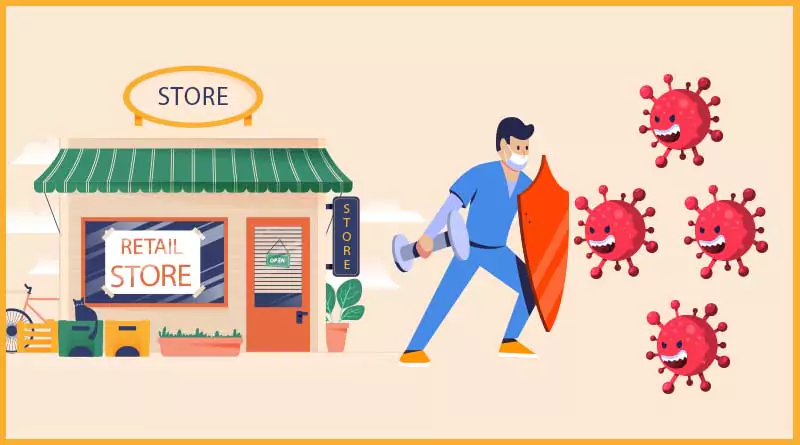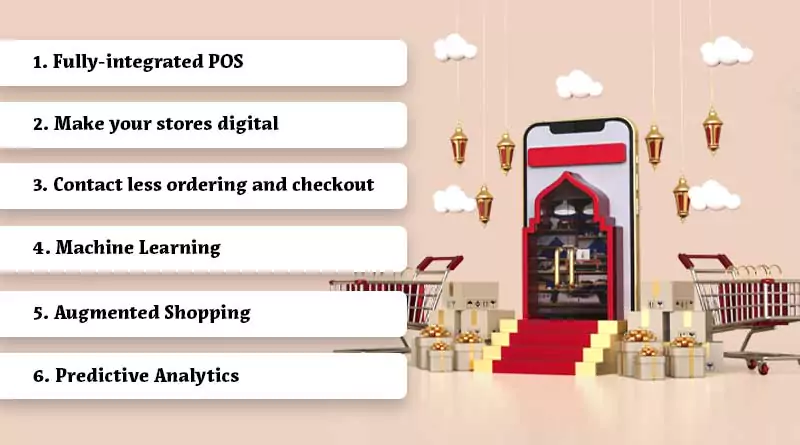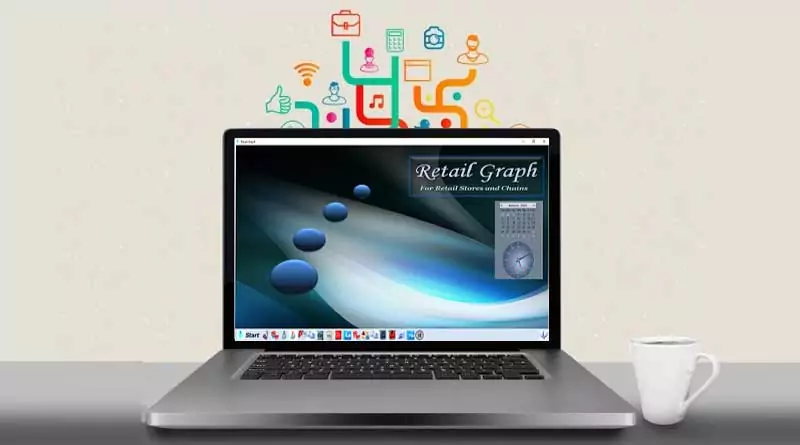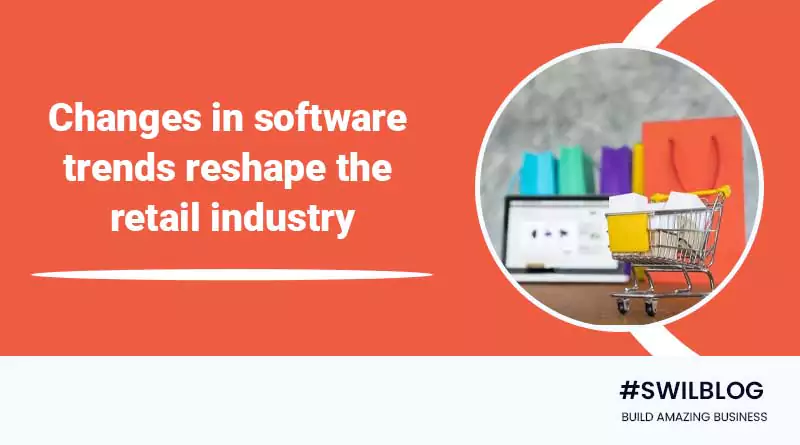Retailers all across the world are using software to take advantage of technology improvements. As a result, every business software changes according to the trend. However, embracing technological advancements now will help the retail sector thrive in the long run.
This is necessary because the digital revolution has drastically altered customer expectations for shopping, online experiences, and even physical establishments.
Transformation in software trends is an important discipline for any software and related development company. It reshapes the customer experience by adding more advanced features and fulfills users’ present demands.
Advancing technology provides new capabilities and facilitates users with a more comfortable way of doing business.
When we consider software advancement in our retail business, the software needs to have facilities for inventory management, sales and purchase management, distribution management, billing, tracking, accounting, and other finance-related features.
These characteristics need to be upgraded as per the market requirements, which help retail businesses in balancing various aspects of retail stores. This will increase customer satisfaction and boost loyalty.
Index…
- Retail of Today and Tomorrow
- Covid-19 and its After-Effects Challenges for Retailers
- Top Six retail technology trends that are set to change the face of industry in the year 2022
- Role of SWIL in Changing Software Tends of Retail Industry
- How we plan changes in our software solution
- About SwilERP
- Conclusion
Retail of Today and Tomorrow
Following the global coronavirus outbreak in 2019, we noticed a significant shift in consumer behavior. People are increasingly engaged in online buying. It makes it difficult for brick-and-mortar enterprises to survive.
This dissatisfaction is expected to remain the same or increase over time for brick-and-mortar stores.
Many consumers will not want to waste time visiting congested shopping establishments for the time being. To reduce virus infection, they seek a contact less ordering and payment mechanism.
However, this is not a permanent solution for the retail sector. Every company needs to earn profit from retail sales, whether in-store or online. The only way is to embrace technological advancements and accept change in response to market and consumer demand.
Post-Covid-19 Impact and Challenges for Retailers

They need to follow new and higher health and safety standards
The pandemic has affected the number of store visits as people avoid crowded places. They avoid such sites, so they are looking for online shopping options for contact-less ordering and billing. So retailers that rely on brick-and-mortar models need to find a solution to this business challenge.
They must grow their business with digital transformation
As more and more purchases occur over the Internet, digital transformation has become a significant priority for retailers. Businesses that already have the software need to upgrade it with the current market demand. And those who have not yet adopted the software need to own it.
They need to improve customer loyalty and engagement programs
The main idea here is how to implement customer loyalty programs in offline/retail stores. This requires a digital system that evaluates your brick-and-mortar business through reports. The system helps your retail store generate loyalty programs, discounts, and offers to customers without any loss like online shopping.
They must enhance logistics capacity management
Now, we have seen a drop in order in brick-and-mortar shops. But retailers should accept this challenge and use software platforms. These software platforms help retailers to know the exact market demand based on customers’ buying patterns. This way, retailers need to ensure that their systems are prepared for the scale of logistics capabilities.
They must have a system for contact-less shopping
Before the pandemic, every customer believed in hands-on experience. But now, every customer is trying to avoid situations where they touch surfaces. Thus, it is a challenge for retailers to plan their brick-and-mortar business so the user experience contact-less ordering and billing.
They must accelerate business with e-commerce
Customers used to shop online before the pandemic, but it was not their priority. But the desire to limit visits to stores after Covid-19 sparked a new demand and encouraged retailers to offer new options. This was a challenge for all the retailers, solved by B2B/B2C applications in software development companies. Now, these applications have become a necessity for your retail business.
Top Six retail technology trends that are set to change the face of industry in the year 2022

This article will look at the top seven Retail technology trends that will shape the sector in 2021 and beyond. These tendencies are developing as ‘pandemic-proof,’ capable of assisting the retail industry in its digital transformation throughout time.
Fully-integrated POS
One of the most challenging tasks for retailers in this epidemic era is to optimize their sales processes to keep up with rising demand.
An integrated POS of a business software solution offers retailers a system that automates the processes like transactions, sales, inventory, and promotional activities in your brick-and-mortar store.
Integrated POS systems can assist them in managing numerous sales channels and providing customers with a consistent shopping experience across platforms.
Make your stores digital
Digital stores are the future of retail. Integrating your business with a single digital platform for ordering, billing, and complete retail store management is now necessary. It gives your business a time-saving and cost-effective solution. It benefits every customer with the following benefits-
- It provides customers with in-depth product explanations.
- It facilitates social sharing and related selling.
- It offers real-time discounts through QR codes and special promo codes.
- It directs customers to specific areas of your store.
- It serves as a self-checkout kiosk and more.
Contact less ordering and checkout
Increasing convenience, saving time, and creating quality experiences have become the pillars of a successful business. Now users want enhanced in-store shopping. A suitable software integration gives automation to the entire retail store. It proffers a frictionless ordering and checkout experience and improves the quality of customer experience.
Machine Learning
Customer demand in the retail space has evolved significantly as a result of COVID-19. Staying on top of the industry requires knowing how to forecast and capitalize on these trends.
The demand forecasting process relies heavily on data. Forecasting client demand becomes much more accurate when machine learning is used.
These improvements improve demand forecasting, inventory planning, customer and supplier relationship management, logistics, manufacturing, and marketing.
Augmented Shopping
Retailers are using augmented and virtual reality technologies to allow customers to engage with their products remotely, allowing them to make better decisions. Customers like the increased shopping function because it will enable them to shop from the comfort of their own home and see all of the details in real-time.
Predictive Analytics
Predictive analysis is a retail software feature that works with data collected on a daily basis. It analyzes the data and derives meaningful insights from which decisions affecting the business can be taken quickly.
This analysis predicts the demand and helps the retailer stock the goods for a continuous supply of the preferred items to the customers.
The main objective of the retail business is to provide the right products at the right time, in the proper condition, at the right place to its customers, for which this software feature is essential.
Role of SWIL in Changing Software Tends of Retail Industry
We at SWIL make every effort to keep up with the changing times, and our experience of 28 years in the retail industry proves this.
SWIL is a retail software-based development company capable of meeting the needs of the retail sector. It measures the small or large requirements of the retail business and implements operations in a planned manner.
Our software products have catered to the requirements of different stakeholders in the supply chain, including Retail Store, Chain of Stores, C&F and Distributors, and the Parent or the Manufacturing Company.
How we plan changes in our software solution

1. We plan a review meeting and discussion with our marketing and customer care teams. In this meeting, we get feedback on new requirements and change requests based on their interaction with the client.
2. Now, the Change Requests are going to evaluate by the Product Development team. The team further discusses the feasibility, whether the features solve a single client’s purpose OR whether it is beneficial for a segment of clients catering to an entire industry.
3. The Change request is then initiated to the Development team and the follow the following process
- Development
- Testing &
- Released on finding it fully functional, released it with the new version of the software, which may cover other such features as well OR only this feature if it’s unique to a client.
4. This updated version is then deployed at the client end, and the customer care team trains the client and operators about the changes in the version and how to use them.
Still, we are working on identifying the current trends in the market and introducing new software versions.
In this way, we work towards continuous improvement and customer satisfaction. We make our software flexible so that the products can work on different platforms.
About SwilERP
SwilERP is the ultimate software solution for retail, distribution, and chain store businesses. It works on different platforms, which include:
- Desktop – Windows
- Web
- Mobile-Android
SwilERP software is unique in its way and caters to the needs of the retailer. Desktops are no longer a requirement; rather it has become the need of time, without which a business suffers.
Similarly, business applications for the Web and your phone is a requirement now, which we have sensed and acted upon.
Conclusion
We believe in continuous improvement; thus, we change continuously. We change and evolve with technology and suggest the same to our customers. If you’re looking for a Retail software solution for your retail or chain stores, kindly contact us. Our team will assist you in the best possible way.








